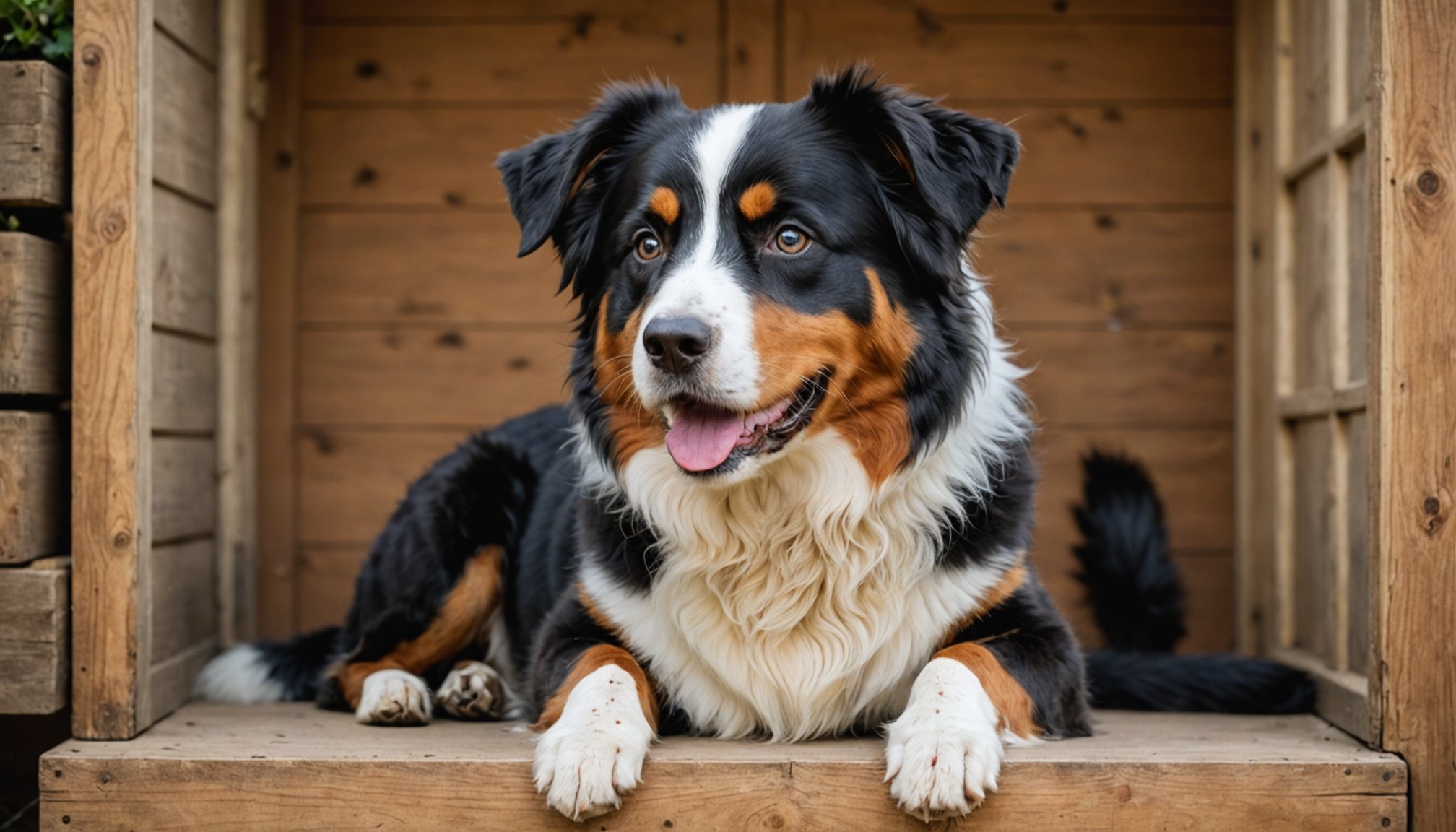Understanding the Needs of Active Australian Shepherds
Australian Shepherds are renowned for their *energetic personalities and impressive intelligence, making them a popular choice for pet owners who can keep up with their unique demands. These dogs possess breed characteristics that include high energy levels and a propensity for herding behaviors, demonstrating a need for vigorous mental and physical activities.
Active Australian Shepherds require ample stimulation to thrive. Ignoring this could lead to behavioural problems stemming from boredom. Physical exercises, such as daily walks, runs, or play sessions, are crucial to maintain their health and happiness. Simultaneously, mental stimulation through puzzles or training exercises can keep their sharp intellect engaged.
Sujet a lire : Nourishing your pregnant toy fox terrier: key insights for meeting her special dietary needs
Despite their active nature, Australian Shepherds can adapt to living in small spaces, provided their needs are met. It involves creative approaches to space utilization, ensuring adequate outlets for their energy. A routine that incorporates both indoor activities, like interactive toys or tug games, and outdoor excursions can fulfil their requirements. Understanding and meeting these specific needs foster a harmonious relationship, ensuring a satisfied and healthy Australian Shepherd. This approach addresses their intrinsic needs, catering to their spirited temperament and preventing potential behaviour issues.
Safety Considerations in Small Spaces
When considering safety in dog design, it is essential to identify common hazards that small spaces present. In compact environments, obstacles such as sharp corners and small objects can pose significant risks. Without sufficient space, active dogs might also accidentally knock over items, leading to potential injuries or damage.
A découvrir également : Proven tips to curb chewing habits in your teething golden retriever puppy
In creating a pet-friendly environment, choosing materials plays a crucial role. Opt for non-toxic materials that are safe if ingested or chewed on by curious pets. Materials like organic cotton, untreated wood, and pet-safe finishes are advisable. Remove or securely store household chemicals and fragile items to avoid inadvertent contact.
Strategies to minimize risks are equally vital in ensuring a safe setting. Designate specific zones for your dog to play and rest, which allows for controlled interaction with the environment. Use baby gates or indoor barriers to restrict access to potentially harmful areas such as kitchens or bathrooms. Also, ensure that furniture and décor are stable and not easily toppled over by an enthusiastic pup. For heightened caution, consider installing childproof locks on low cabinets and drawers.
By being mindful of these aspects, dog owners can create a safe, relaxing space for their furry friends, even in limited quarters.
Organizing a Stimulating Environment
Creating a functional and safe environment for children requires effective space organization. Start by assessing the area’s unique dimensions and potential safety hazards. Utilise wall-mounted storage to keep floor space open and accessible, reducing the risk of trips and falls. Highlight the importance of a thoughtful visual layout to promote engagement without overcrowding. Eye-catching colours and distinct areas can stimulate interest while maintaining a sense of order.
Decluttering tips are essential for maintaining this order. Regularly sort through toys and equipment, donating or storing away items that are rarely used. This not only creates space but also ensures that the available toys remain interesting and relevant to children’s developmental stages. Integrate versatile storage solutions, such as stackable bins or multi-purpose furniture, to store items efficiently.
To maximize space while maintaining a neat appearance, categorize toys and materials, placing similar items together. This strategy supports easy retrieval and encourages children to participate in tidying activities. Remember, an organized environment fosters creativity and concentration, offering children the freedom to discover and learn without distraction. Cultivating a stimulating yet orderly space paves the way for both fun and focused exploration.
Incorporating Play and Stimulation Features
Providing stimulating play and exercise in confined areas is crucial for Australian Shepherds. To achieve this, incorporating various types of dog toys is essential. Interactive play encourages mental engagement and physical activity, catering to the breed’s energy levels and intelligence.
Agility setups can be designed within your home or backyard to keep Australian Shepherds engaged and challenged. These setups are not only an excellent way to burn off energy but also promote bonding between you and your pet. Use items like cones for weaving or ramps for climbing. Adjusting these setups ensures that the agility exercises remain exciting and suitable for your dog’s skill level.
Another way to incorporate stimulation is through interactive features such as puzzle toys. Puzzle toys offer mental stimulation by challenging your dog to solve a problem to receive a reward, typically a treat. Activities like hide-and-seek with their favourite toys or organising treasure hunts can further enhance mental engagement.
Combining these approaches will help meet the physical and mental needs of your Australian Shepherd while fostering a healthy and enriching environment.
Visual Examples of Dog-Friendly Spaces
Creating a pet-friendly layout doesn’t have to be complicated. By examining successful design examples, even compact homes can accommodate our four-legged friends comfortably. A common approach is the integration of multi-functional furniture, which opens up more space for movement. For instance, an ottoman or bench with hidden storage can declutter rooms, giving dogs more freedom to roam.
Small adjustments in a living space can significantly influence dog behavior. Thoughtfully designed spaces often feature designated areas for rest and play. Imagine a cozy nook under the stairs, transformed with a plush dog bed and some favorite toys. This creates a personal retreat for pets, reducing stress and anxiety.
Visual elements such as colour and texture play pivotal roles in creating a welcoming environment for dogs. Warm tones and soft, durable materials work best. Consider wall-mounted bowls or floor-level windows that allow dogs to peer outside without obstructing human eye lines, fostering relaxation and stimulating curiosity.
Successful transformations reflect both the needs of pets and the aesthetic of owners. With design creativity and practicality in mind, any space can become a harmonious home for both humans and dogs.
Cost-Effective Solutions for Pet Owners
Designing a pet-friendly home doesn’t have to break the bank. With a bit of creativity, you can implement budget-friendly designs that will keep both your pets and wallet happy. One approach is DIY projects which can transform any space into a cozy pet haven. From crafting a homemade scratching post using scrap wood and sisal rope to creating a pet bed from upcycled old cushions, the possibilities are endless.
Securing affordable materials is another key factor. Local thrift shops or online marketplaces offer a variety of pet-safe options at a fraction of retail costs. Consider using waterproof fabrics for furniture that withstands the wear and tear of claws and paws without expensive replacements.
Maximizing the impact of these low-cost solutions involves smart choices. Opt for multi-purpose items such as a bench that doubles as a pet gear storage unit or furniture that integrates pet-friendly features like built-in feeding stations. This not only optimizes space but also creates a harmonious living environment for all household members.
Incorporating these elements will ensure your home is not only a sanctuary for pets but also a testament to effective and economical living.
Expert Opinions on Creating Dog-Friendly Spaces
Crafting a space that is both stylish and accommodating for your pet involves a blend of specialised insights. Here’s what the experts say.
Delving into dog trainers’ insights, their primary focus is on designing environments that enhance a dog’s natural behaviours. They stress the importance of providing spaces that allow for play, rest, and exploration. For instance, trainers emphasize creating designated areas for different activities, such as cosy nooks for relaxation and open spaces for active play.
Meanwhile, pet designers bring a unique aesthetic perspective. They advocate for integrating materials and furniture that are both functional and durable. Interviews with leading designers reveal common themes: using scratch-resistant fabrics, non-toxic paints, and multi-functional furniture that accommodates pets’ needs without sacrificing style.
Expert recommendations play a crucial role in optimising small spaces for dogs. They often propose multifunctional designs to maximise limited areas. For example:
- Incorporating foldable or stackable furniture to make space adaptable
- Using vertical spaces for storage or play areas
By heeding this fusion of expert advice, pet owners can craft a harmonious living environment that caters to both their own and their furry companion’s needs.
The Benefits of a Dog-Friendly Environment
Creating a dog-friendly environment offers multiple benefits that enhance both canine wellness and owner satisfaction. A well-designed space provides mental and physical stimulation for dogs, crucial for maintaining their overall health. By incorporating features like interactive toys, safe play areas, and comfortable resting spots, you cater to your dog’s innate urge for exploration and rest, promoting a happier pet.
Behavioral improvement often results from a space that’s thoughtfully arranged. Dogs thriving in environments that match their instincts exhibit reduced anxiety and destructive behavior. Simple elements like designated potty areas or no-slip surfaces contribute significantly to a dog’s quality of life and behavior. These practical tweaks help foster a harmonious atmosphere where discipline and freedom coexist.
Investing in creating a dog-friendly home presents long-term advantages. Not only does your dog benefit, but it also strengthens the bond between pet and owner. Such environments can lead to fewer behavioral issues and health problems, reducing potential veterinary costs. Moreover, knowing that you’re meeting your dog’s needs improves owner satisfaction, turning the home into a sanctuary for both. Prioritizing such enhancements elevates the living experience for every family member, two-legged or four.













